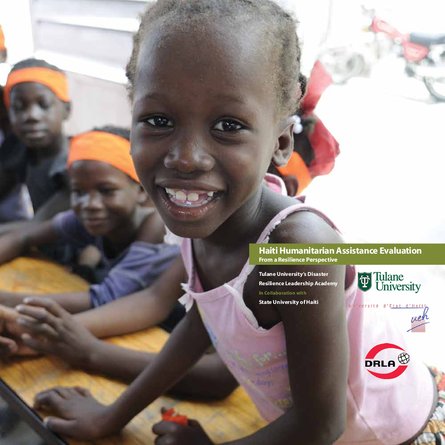
The 2010 earthquake in Haiti was one of the worst natural disasters the western hemisphere has ever seen; its effects were exacerbated by environmental degradation, social vulnerability, and repetitive exposure to shocks. As shown in Graph 1, the financial resources Haiti received in the year following the earthquake dwarfed past humanitarian funding in the country. Humanitarian actors included traditional multi-lateral and bi-lateral responders, large and small non-profit organisations and individual citizens from around the world who traveled to Haiti and who acted remotely through digital avenues, including social media. This massive outpouring of resources to the country supported immediate lifesaving activities and presented an opportunity to address Haiti’s vulnerabilities—chronic poverty, environmental degradation, population density and rapid urbanisation— through efforts to improve the strength and resiliency of Haitian people and organisations.
No stranger to disaster, Tulane University’s Disaster Resilience Leadership Academy (DRLA), based in New Orleans, Louisiana, has witnessed, experienced and evaluated the problems that can arise when supply-side humanitarian assistance is directed by external actors. In Haiti, Louisiana, and other places impacted by natural and man-made disasters, effective humanitarian assistance should include two objectives: preventing excess mortality and human suffering in the immediate, and in the longer term, improving the community’s ability to respond to potential future shocks.
In an effort to advance this approach to humanitarian assistance, DRLA, in partnership with the State University of Haiti (UEH), conducted the Haiti Humanitarian Assistance Evaluation. The evaluation attempts to build a framework for analysing resilience and the effects of humanitarian assistance on resilience outcomes. This evaluation is summative in nature—it represents a multiple method research strategy, drawing upon existing secondary data and analyses as well as primary data collection, including household survey data, community level key informant data and qualitative data from focus groups.
This report first details the data collection methodologies and the resilience framework and metrics used to analyse resilience at the household level. Next, the report provides an in-depth discussion of the seven DRLA/UEH resilience dimensions. After defining and analysing the dimensions, the report examines Haitian households’ perceptions of humanitarian assistance and the impact that it has had on each of the dimensions. The report concludes with recommendations for improving recovery programming in Haiti, for future evaluations of humanitarian assistance and for further research and monitoring.